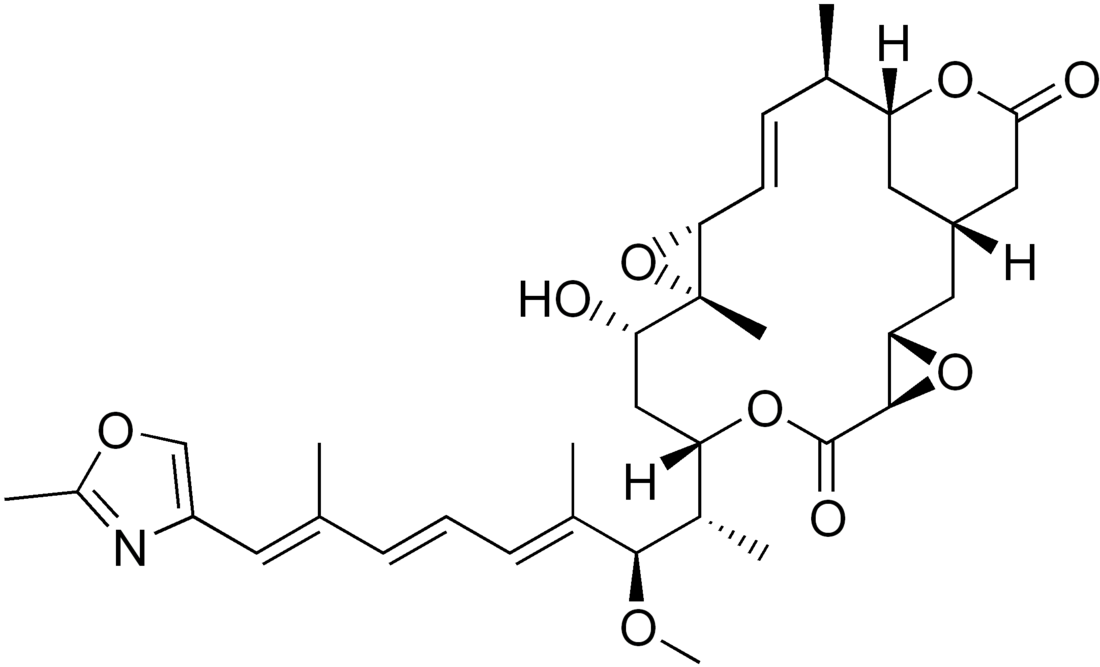Top Qs
Timeline
Chat
Perspective
Rhizoxin
Chemical compound From Wikipedia, the free encyclopedia
Remove ads
Rhizoxin is an antimitotic agent with anti-tumor activity.[1][2] It is isolated from the fungus Rhizopus microsporus which causes rice seedling blight.
Remove ads
Biosynthesis
Rhizoxin is biosynthesised by Paraburkholderia rhizoxinica, a bacterial endosymbiont of the fungus Rhizopus microsporus.[3] It is one of a large group of rhizoxin-like compounds produced by the bacteria.[4] The bacterial endosymbiont can be grown independently in culture. This may allow easy harvesting of rhizoxin and the related compounds avoiding total chemical synthesis, although total chemical synthesis is possible.[5]
Remove ads
Cytotoxic function
Rhizoxin binds beta tubulin in eukaryotic cells disrupting microtubule formation. This, in turn, prevents formation of the mitotic spindle inhibiting cell division. Additionally rhizoxin can depolymerise assembled microtubules.[6] The function of rhizoxin is similar to Vinca alkaloids.
Rhizoxin has undergone clinical trials as an anti-cancer drug[7] although it did not reach later stages of clinical trials due to low activity in vivo. Related compounds to rhizoxin have improved biological activity (E.G Mertansine) .[4]
Remove ads
Structure
Rhizoxin is a 16-membered lactone ring connected to an oxazole ring by a long unsaturated chain.[8]
References
Wikiwand - on
Seamless Wikipedia browsing. On steroids.
Remove ads

